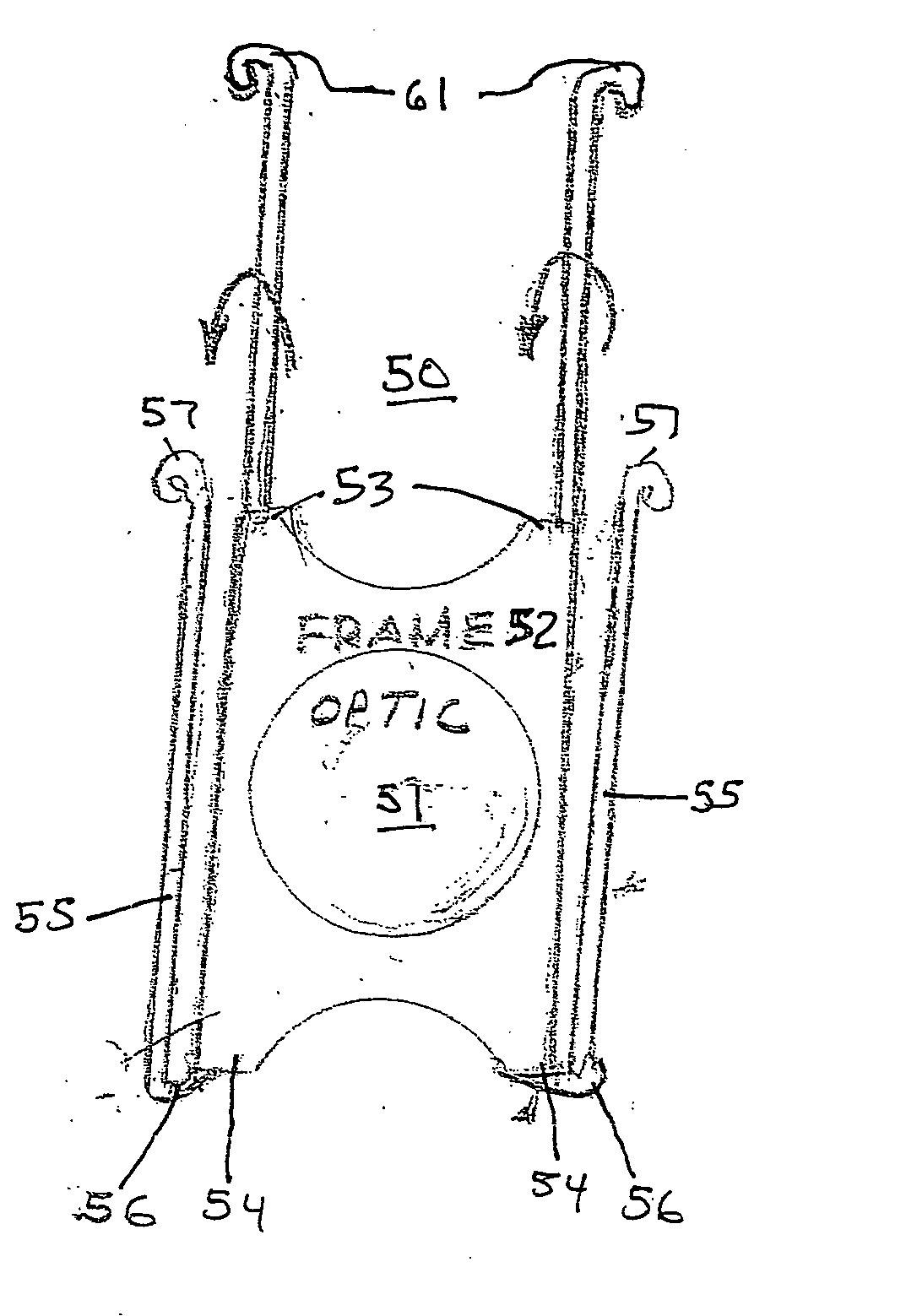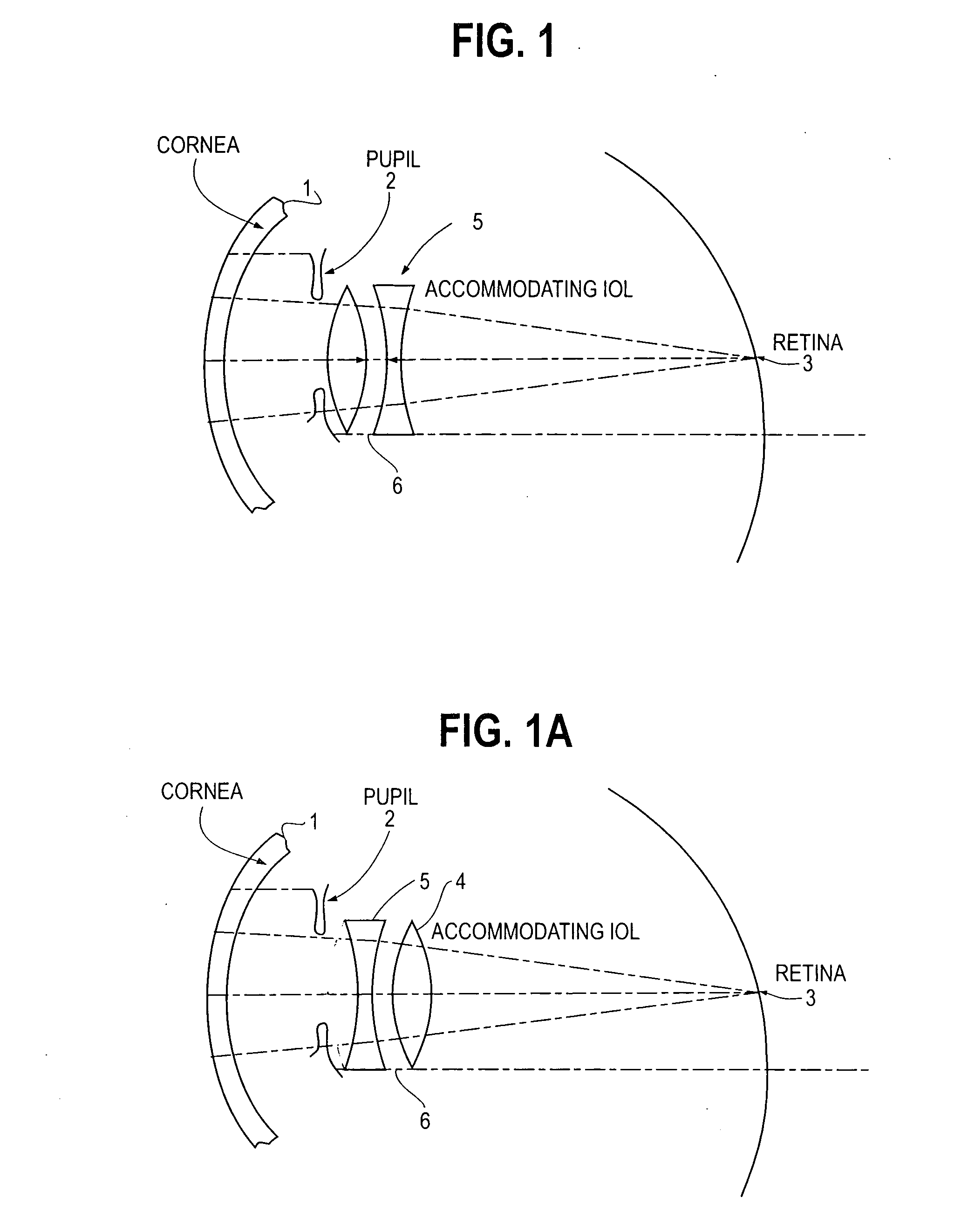Accommodating intraocular lens
a technology for ocular lenses and lenses, applied in intraocular lenses, medical science, prosthesis, etc., can solve the problems of blurry image formed by the zone under consideration, loss of ocular lens accommodative range, and loss of transparency
- Summary
- Abstract
- Description
- Claims
- Application Information
AI Technical Summary
Benefits of technology
Problems solved by technology
Method used
Image
Examples
Embodiment Construction
Our invention relates to an IOL configuration having a positive lens and a negative lens with a variable focal length (or dioptric power) that depends on the distance along the optical axis separating the two lenses while maintaining a constant angular magnification for objects viewed over a wide range of distances (e.g. from infinity to typical reading distances). The positional order of the lenses in the eye can be either with the positive lens more anterior or the reverse, or with the negative lens more anterior or the reverse. Each negative and positive lens may be placed either in the capsular bag or the ciliary sulcus. The negative and positive lenses either may or may not be mechanically linked to one another by tabs and strut-like linkages (haptics) attached to the edges of the two lenses. During cataract surgery and IOL implantation, the positive and negative lenses may be inserted intra ocularly either one at a time (if the components are not mechanically linked to one an...
PUM
 Login to View More
Login to View More Abstract
Description
Claims
Application Information
 Login to View More
Login to View More - R&D
- Intellectual Property
- Life Sciences
- Materials
- Tech Scout
- Unparalleled Data Quality
- Higher Quality Content
- 60% Fewer Hallucinations
Browse by: Latest US Patents, China's latest patents, Technical Efficacy Thesaurus, Application Domain, Technology Topic, Popular Technical Reports.
© 2025 PatSnap. All rights reserved.Legal|Privacy policy|Modern Slavery Act Transparency Statement|Sitemap|About US| Contact US: help@patsnap.com



